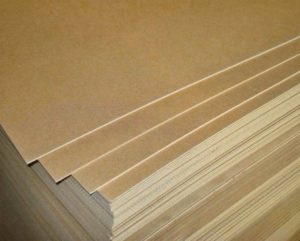 The back wall is an important part of each cabinet. Although the choice of furniture pays the least attention to this part, the wall that is not visible to the eye is of great importance.
The back wall is an important part of each cabinet. Although the choice of furniture pays the least attention to this part, the wall that is not visible to the eye is of great importance.
We will figure out what materials the back wall of the cabinet is made of.
Purpose of the back wall
The content of the article
- Purpose of the back wall
-
Fiberboard
- Benefits
- disadvantages
-
Chipboard
- Benefits
- disadvantages
- Plywood
- Benefits
- disadvantages
Her the main purpose is to stiffen the entire structure. Over time, the closet is filled with things whose weight can be distributed unevenly. If the stiffness is not enough, it is deformed. Exactly the back wall gives the furniture the necessary hardness and stability.
Gone are the days when cabinet furniture was made of solid wood. Today, the back walls are most often cut out of wood-fiber boards (MDF), laminated chipboards (chipboard), as well as plywood.
These materials differ in the following characteristics:
- appointment;
- hardness;
- thickness.
And there are significant differences in moisture resistance and fire resistance.
Fiberboard
A back wall made of fiber boards is mounted on the assembled furniture body. Its thickness is most often 4 mm.
Such a "back" is fixed in the supine position with self-tapping screws or a construction stapler. If a wall of this material is mounted vertically, then it is previously divided into parts and assembled in stages.
Fiberboard is made of round quality low-quality wood or wood waste - sawdust and wood shavings. They are processed into pulp. Various chemicals are added to it in order to increase the water resistance and strength of the future material. Then it is sent to casting machines to increase humidity, and then under a hot press.
Benefits
Fiberboard has only one advantage - relative cheapness.
disadvantages
The disadvantages of this material are much greater.
- Structural strength from fiberboard, especially high, very limited.
- Poor color assortment - no more than 5 shades.
- Material does not withstand high humidity, as often only one side is painted or laminated.
- Installation requires a lot of free spacethat is physically impossible in small rooms.
- Often the wall has a persistent bad smell.
- Due to the overlapping installation, the material is visible from the end of the furniture, which spoils the aesthetic appearance. It is becoming more difficult to mount tall sliding wardrobes to the wall.
Chipboard
Back walls for a case from the laminated chipboards - more reliable option than from fiberboard. They strongerare mounted in a loose way and have a decorative coating, therefore more aesthetic in appearance. This cover can imitate wood structure or be smooth.
Chipboard is made from ordinary polished wood-chip boards with the connection of the lamination area. Material coating with a laminating film can occur according to three technologies: lamination, laminating, smooth lamination.
For the production of this material using a hot press, the temperature of which is 160-220 degrees. Several layers of prepared paper and a mixture of several resins are applied to the chipboard, which, when heated, turn into a strong film and reliably protect the surface of the material.
Laminated chipboards are made in various thicknesses.. There are three options: 10, 16 and 18 mm.
Benefits
- High strength and durability.
- Large selection of colors, which allows you to choose a shade suitable for the color of the case.
- Installation can be carried out in tight spaces..
- Ability to mount in several ways: Euroscrews, corners, cam.
- High moisture and scratch resistant.
disadvantages
The only drawback may be high cost of this material.
The cost of installing walls made of chipboard often reaches the cost of finishing work for the walls of the premises.
Plywood
Plywood - one of the best, but expensive materials for the back of the cabinet. It has a smooth surface that does not need additional grinding. In the manufacturing process, heat treatment and drying are used. Therefore, the product for a long time retains a presentable appearance, does not crack and does not deform.
Plywood is made from various types of wood, but the most popular raw material is birch.
Benefits
She has a smooth and strong structure, because smooth and high-quality veneer is made from it. After giving the desired thickness, the veneer sheets are glued together, resulting in a well-known plywood. Sheets of this material for the rear walls of cabinets are traditionally made with a thickness of 3 mm.
disadvantages
Despite all the advantages, plywood walls have their drawbacks, which can significantly complicate the installation process.
- There is a need to cut grooves in detail.
- In case of deformation, the wall may pop out of the grooves.


